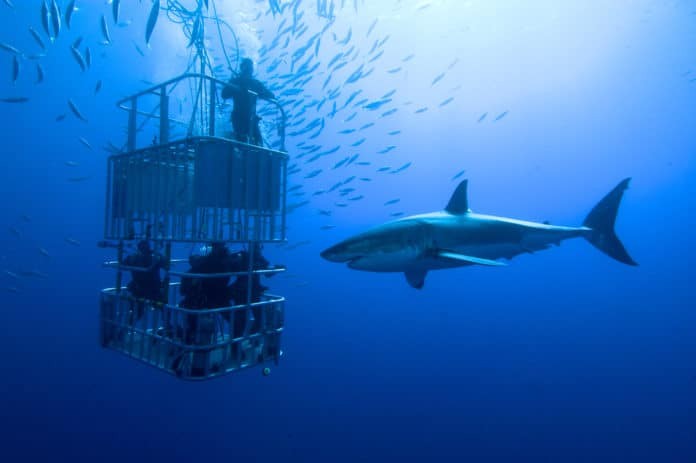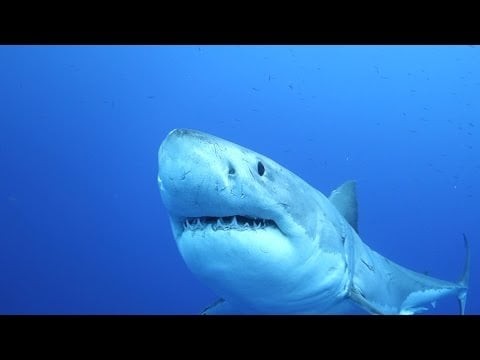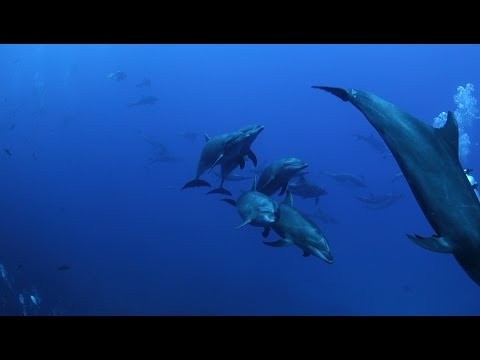When you mention diving in Mexico, the first thing that comes to many diver’s mind is the Yucatán Peninsula (Spanish: Península de Yucatán). Along with the nearby island of Cozumel, this is one of the most popular diving destinations in the world. Dubbed the Mayan Riviera, you will find diving on the Mesoamerican reef and even an underwater art museum. However, on the other side of Mexico along the Pacific Ocean, you will also find outstanding diving.
The cruise industry has dubbed the Pacific Coast of Mexico as the Mexican Riviera. Cruise ships from American ports bring tourist down the coast of Baja California and on to resort towns and cities along the Mexican mainland. Locations such as Mazatlan, Puerto Vallarta, and Acapulco are known as world-class destinations. Granted there is great diving in these well know locations, there is even better diving around the Baja Peninsula that the cruise ships mostly bypass.
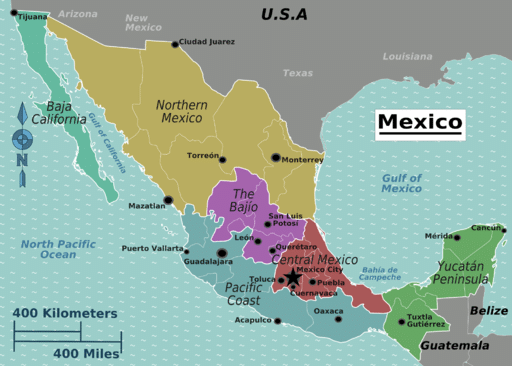
Baja California is Mexico
Looking at the name and the United State’s State of California will often jump to mind. However, Baja California is a part of Mexico. The Baja Peninsula is 1250 kilometres/775 miles long starting from near the US-Mexico border. The east coast of the peninsula along with the west coast of the mainland from the Sea of Cortez also know as the Gulf of California. The west coast of the Baja fronts the Pacific Ocean. Cabo San Lucas is at the southernmost tip of the peninsula and is the separation point between the Gulf and the Pacific Ocean.
The Baja Peninsula is not as developed as the rest of the Mexican Riviera. Much of it is deserts and mountain ranges. The Baja 1,000 is one of the world’s best off-road races. There are some major cities such as Tijuana which is on the Mexican-American border. Tijuana International Airport is a major international gateway to the northern portions of Baja. However, the international airport in San Diego California in the United States is only 20 minutes away. Ensenada, La Paz, and Cabo San Lucas are the major tourism destinations in the area with infrastructures that support a range of tourism activities. Along the coastlines are other smaller destinations that focus on whale watching, scuba diving, and deep sea fishing.
Mexican Liveaboard Trips – See Prices Online
Reason #1: Ensenada and Guadalupe Island
Ensenada, located just an hour and a half drive from the Mexican city of Tijuana and the American city of San Diego, is a very popular tourism destination. Cruise ships departing from California stop here making it the second busiest cruise port in Mexico. It also has a great deal to offer scuba divers.
Ensenada is located within the curve of Bahía de Todos Santos (All Saints Bay). Outside of the Bay are the deep waters of the Continental Shelf. There are a number of canyons that bring the deep waters into the shallower bay. Many of the dive sites have kelp forest. Outside of the bay going north are a number of other small dive destinations all within less than an hours drive.
La Bufadora is a marine blowhole located just south of Ensenada. Here tourists come to watch the spray shoot high into the air. Along the way between Ensenada and La Bufadora are some unique beaches. Between high and low tide you can dig out a hole a few feet down in the sand. It will fill with 100 degrees (F) water where you can relax in your own personal spa. Offshore are dive sites such as the one called La Bufadora Hot Springs. This site is 80 feet deep and has a number of volcanic vents that has hot water rising to the surface. The area is known for dramatic walls, caves and sea lions.
Guadalupe Island (Isla Guadalupe) is a volcanic island and popular liveaboard destination reached from Ensenada with some operators meeting their guest in San Diego. The island is 241 kilometers (150 mi) off the west coast of Mexico’s Baja California Peninsula and some 400 kilometers (250 mi) southwest of the city of Ensenada. Great Whites are the reason divers make the long trip here. The cage diving may be the best in the world. The Great Whites, Guadalupe fur seals, tuna, and sea lions are most frequently sighted from August to October. The ocean is calmest at this time however, divers can expect colder sea temperatures of 66 to 72°F (19°C to 22°C).
Reason #2: La Paz
Located about an hour and a half drive from Cabo San Lucas and serviced by the same airport is the resort destination of La Paz. La Paz faces the Sea of Cortez/ Gulf of California. It has an outstanding reputation as a resort destination and one of the best diving destinations in the Baja Peninsula.
- Marisla Seamount, or El Bajo is one of the dive sites that is accessed from La Paz. This site has three peaks that reach up to just 60 feet below the surface. It is considered one of the best sites in the world for hammerhead sharks. Hammerheads are frequently seen on this site and have only been sited swimming clockwise around the seamounts. Amber jacks and tuna are some of the large marine life found here.
- Los Islotes is also close to La Paz. The waters around these islands are teeming with sardines. Over 200 California sea lions make the islands their home attracted by that delicious food the sardines are to them. Sea lions are very playful and will frequently check out the divers to see what’s up.
- The waters of La Paz is also a seasonal destination for whale sharks and some whales. Whale shark snorkeling trips are available as are whale sighting cruises. Divers often come across them while diving at the peak season.
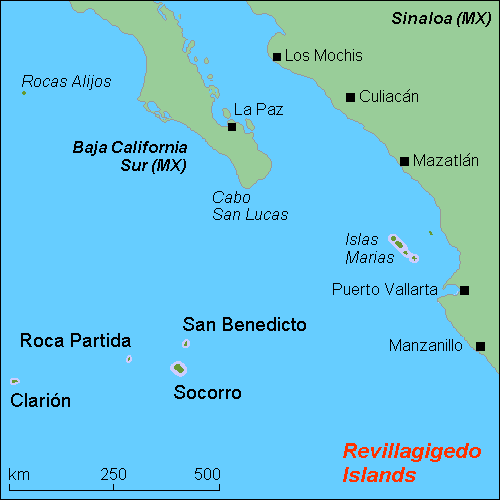
Reason #3: Cabo San Lucas
Where the Pacific Ocean and the Sea of Cortez meet. Cabo San Lucas is an international jet-set destination, a place to see and be seen. The famous have been coming here since the 1950s, and it does not seen to be letting up. Just a short two-hour flight from Los Angeles means a great weekend getaway for the rich and famous. There is also an atmosphere of spring break year round. However, When you step away from that, you find a great place to scuba dive.
There are many dive sites around the Cabo San Lucas area. The bay of Cabo San Lucas is a protected marine park with a number of dive sites.
- Lands Ends where the Pacific Ocean and the Sea of Cortez divide is one example. Large schools of sharks, tunas, barracuda, and baitfish make this a dive you will never forget. There is a flat rock out in the water that the sea lions use to sun themselves when they are not checking you out.
- Pelican Rock: The site has a reef that starts at 15 feet and slopes to 70 feet. It then drops off to over 500 feet. One of the famous “Sandfalls” starts in about 90 feet of water then drops into the canyon below.
- Neptune’s Finger: This dive site has two shallow coral reefs at about 15 feet and, a beautiful vertical wall that drops to about 500 feet. The largest sand fall of the Cabo San Lucas Marine Park is the central feature of this dive site.
Reason #4: The Socorro Islands, or Revillagigedos Islands
Archipiélago de Revillagigedo is a UNESCO World Heritage site and a Biosphere Reserve. UNESCO describes it as:
“Located in the eastern Pacific Ocean, this archipelago is made up of four remote islands and their surrounding waters: San Benedicto, Socorro, Roca Partida, and Clarión. This archipelago is part of a submerged mountain range, with the four islands representing the peaks of volcanoes emerging above sea level. The islands provide critical habitat for a range of wildlife and are of particular importance for seabirds. The surrounding waters have a remarkable abundance of large pelagic species, such as manta rays, whales, dolphins, and sharks.”
The Revillagigedo Islands are one of three Mexican island groups in the Pacific Ocean that are not on the continental shelf; the others are Guadalupe Island and Rocas Alijos. The months of November through May are the liveaboard season with January to March bringing divers to experience humpback whales that come here to calve. Liveaboards depart from Cabo San Lucas for a 22-hour crossing before reaching the first dive site. Traveling between the four islands are done at night and the travel may take as long as an additional 7 hours.
Mexican Liveaboard Trips – See Prices Online
Have you dived Baja California? Tell us about your experiences in the comments below.

